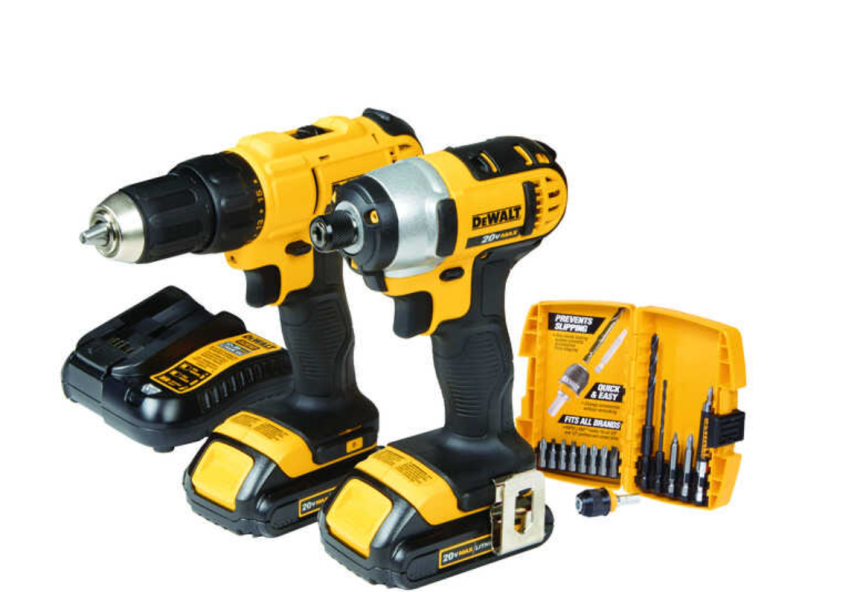Introduction
Choosing the correct power tool for a specific job can make all the difference in the quality and efficiency of your work. However, it can also be overwhelming with so many options available, especially for beginners. In this article, we will guide you through selecting the appropriate power tools for various jobs and materials while addressing common mistakes and pitfalls to avoid along the way. Let’s get started on your journey to becoming a power tool expert!
Matching Power Tools to Specific Tasks
To match power tools to specific jobs, identify the type of work you’ll be performing. For example, consider using an electric or cordless drill when drilling holes. These tools offer versatility and precision when working on wood, metal, or masonry surfaces. The impact driver is a powerful tool to consider when fastening hardware, which can effortlessly drive screws into tough materials. For cutting materials, circular saws are excellent all-around saws that can be used on wood, metal, or plastic. When sanding surfaces, a random orbit sander is an ideal choice for its ability to provide a smooth finish without leaving swirl marks. Understanding the jobs at hand will enable you to choose the most suitable power tool, ensuring efficiency and quality in your work.
Drilling holes
Choosing the right tool and drill bit for the job is essential when drilling holes. For example, a standard drill works well for wood, plastic, and thin metal, while a hammer drill is necessary for masonry and concrete. Hole saws are excellent all-around saws for creating larger openings. Remember to start at a slow speed and increase gradually, preventing slips or mistakes. Always mark the location with a pencil beforehand.
Fastening hardware
When fastening hardware, choosing the correct power tool for the job is crucial. Cordless drills, impact drivers, and wrenches are common options for this job. Impact drivers are excellent tools for screws and bolts, while wrenches provide more torque for heavy-duty applications. Starting with a lower torque setting to avoid over-tightening is advisable for beginners.
Cutting materials
To efficiently cut various materials, choosing the right power tool is crucial. Jigsaws and reciprocating saws excel at making curved cuts, while circular and miter saws are best for straight cuts in wood, plastic, or soft metals. On the other hand, oscillating multi-tools offer versatility, acting as excellent all-around saws. Remember that using the correct blade for the specific material is essential for a clean and accurate cut.
Sanding surfaces
When sanding surfaces, choosing the right tool for the job is essential. Orbital sanders are perfect for large, flat areas, while detail sanders work well on tight corners and edges. Random orbit sanders combine both motions, making them excellent all-around saws. Always use the appropriate grit sandpaper for the material and desired finish, and don’t press down too hard; let the tool do its job.
Matching Power Tools to Specific Materials
Matching power tools to specific materials is crucial in achieving the best results and preventing damage. First, woodworkers should ideally choose excellent all-around saws such as circular saws, jigsaws, and miter saws for cutting wood, while for fine woodworking, a table saw or band saw is more suitable. When it comes to metal, an angle grinder or metal cutting saw will do the trick; for drilling purposes, ensure you are using adequately coated drill bits for metals like steel, aluminum, or brass. A hammer drill or rotary hammer is the right choice for masonry and concrete, with specialized masonry drill bits in place. Lastly, when working with plastics and composite materials, use carbide-tipped blades for clean and precise cuts to avoid melting or damaging the materials.
Wood
Wood is versatile, and various power tools are suitable for cutting, shaping, and finishing. Jigsaws and circular saws are excellent for cutting wood, while routers and sanders help create smooth edges and surfaces. A power drill with the appropriate bit will suffice for drilling holes or fastening hardware. Always use sharp blades and bits for clean cuts and efficient work.
Metal
Masonry and concrete
When working with masonry and concrete, using the appropriate power tools designed for these materials is crucial. A hammer drill, for instance, is designed to easily bore through concrete, while a masonry or segmented diamond blade will significantly improve cutting results in brick, stone, or tile. Additionally, consider investing in excellent all-around saws like reciprocating or circular saws to provide versatility in various cutting scenarios.
Plastic and composite materials
Select tools suitable for softer materials when working with plastic and composite materials. Jigsaws and scroll saws are excellent for cutting curves and intricate shapes, while circular and table saws provide clean, straight cuts. For drilling, use appropriate bits explicitly designed for plastic to prevent cracking or melting. Ultimately, always follow the manufacturer’s guidelines for recommended tools and techniques for your material.
Common Beginner Mistakes and How to Avoid Them
As a beginner, it’s essential to be aware of common mistakes to avoid mishaps or damage to your materials or power tools. One common mistake is overpowering the tool by applying excessive force, which can lead to tool failure or cause the material to splinter or break. It’s essential to allow the device to work and ensure you use the correct tool with the appropriate settings.
Another common error is using the wrong bit or blade for the material or job, reducing efficiency and possibly damaging the cutting edge or surface. Always double-check the tool’s manual or consult with an expert to ensure you’re using the right accessory for the job. And finally, never overlook safety precautions, such as wearing protective gear and ensuring tools and cords are in good working condition. Avoiding these mistakes will create a safer and more efficient workspace while tackling various projects.
Mistake 1: Overpowering the tool
One common beginner mistake is overpowering the tool, which can lead to accidents and material damage. Remember that power tools are designed to make work easier, so let the tool do the job without applying excessive force. For example, when using excellent all-around saws like a jigsaw or a circular saw, don’t push too hard and let the blade cut smoothly through the material. This will result in a cleaner cut and less stress on your power tool.
Mistake 2: Using the wrong bit or blade
When using power tools, using the appropriate bit or blade for the job and material at hand is crucial. Always consult the manufacturer’s recommendations and ensure your bit or blade is compatible with your tool. Using the wrong bit or blade can damage your tool, ruin the finish of your material, and, in some cases, cause accidents. Remember, the proper combination of tool and accessory will make the job easier and result in a better-finished product.
Mistake 3: Ignoring safety precautions
Another common beginner mistake is not taking safety seriously while using power tools. Always wear appropriate personal protective equipment, such as safety glasses, gloves, and ear protection when necessary. Additionally, ensure all guards and safety features are in place and functioning correctly. Investing in these practices will prevent accidents and injuries and create a safer work environment for yourself and others around you.
Conclusion
In conclusion, choosing the correct power tool for a specific job and material is essential for achieving the best results and ensuring your safety. Remember to consider the type of job, material, and required precision when selecting a tool. Also, avoid common beginner mistakes, such as overpowering the tool, using the wrong bit or blade, and ignoring safety precautions. With the proper knowledge and practice, you’ll soon be on your way to mastering power tools and completing your projects.















